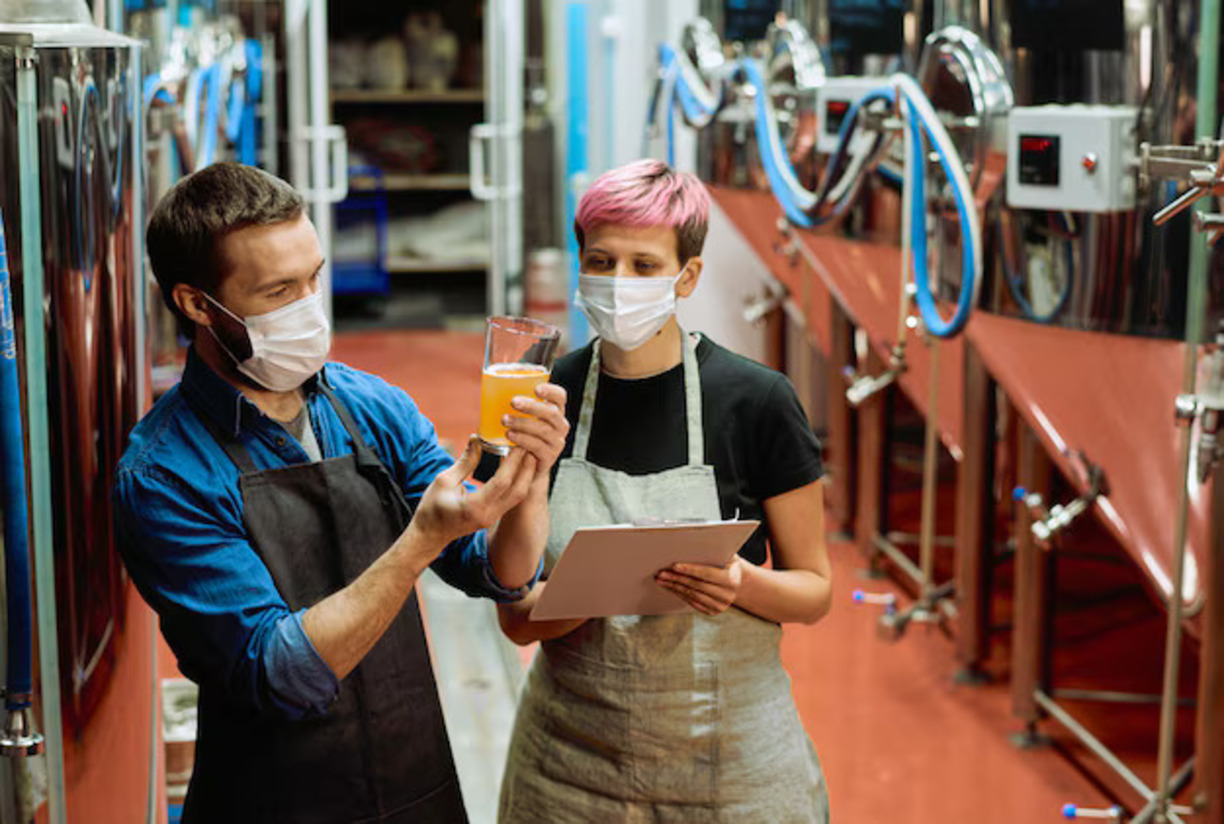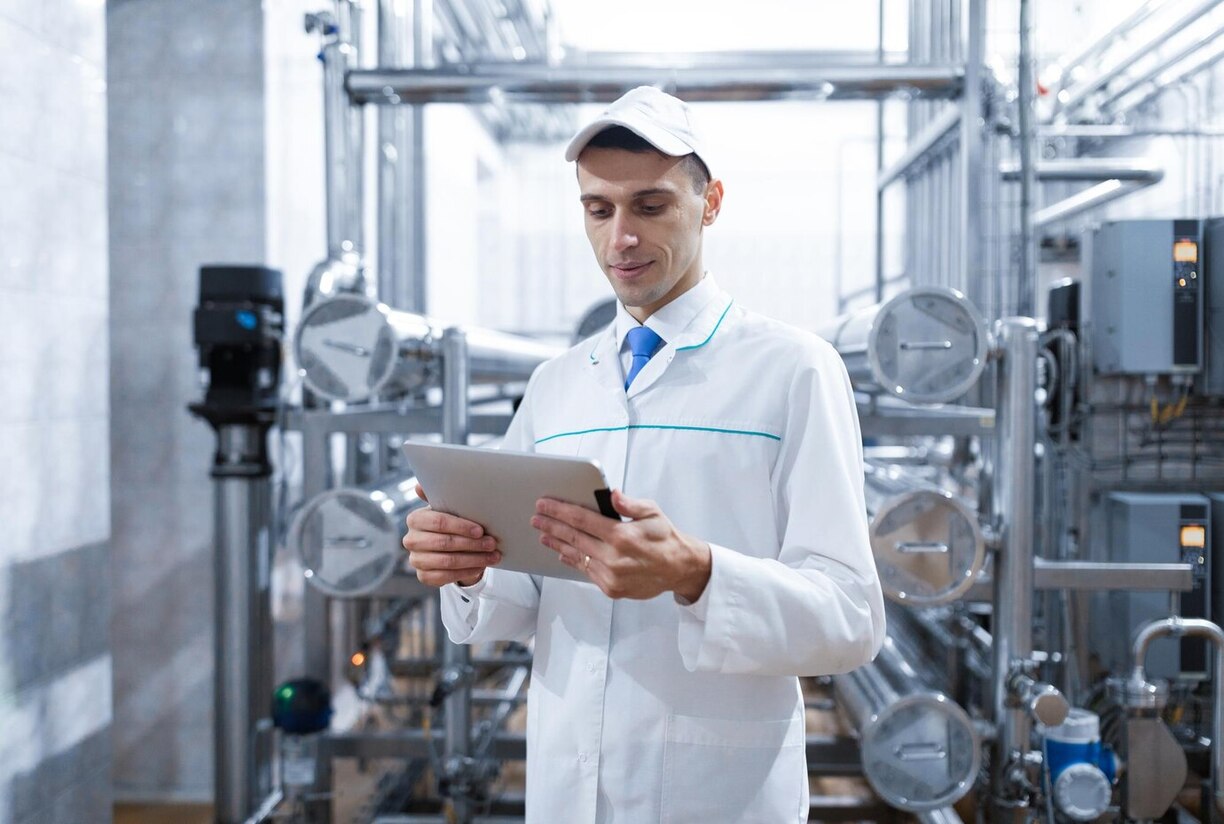Hygienic Plumbing Installation Guide for the Food and Pharmaceutical Industry
- Blog
- Hygienic Plumbing Installation Guide for the Food and Pharmaceutical Industry
Hygienic Plumbing Installation Guide for the Food and Pharmaceutical Industry
In the food and pharmaceutical sectors, hygiene, product safety, the health of production processes, and consumer safety are directly influenced by a fundamental factor. The proper installation of the piping systems used in production facilities in these sectors is of great importance to ensure that hygiene is maintained at the highest level. Industrial hygienic installation assembly plays a critical role in both sectors for the safe production, transportation, and storage of products. This guide will provide a broad perspective on how hygienic installation assembly should be carried out in the food and pharmaceutical sectors, the factors to consider, and everything from the correct material selection to maintenance requirements.
The Importance of Hygienic Installation Assembly in the Food and Pharmaceutical Sectors
The food and pharmaceutical sectors are areas where hygiene is subject to much stricter regulations and inspections. Hygienic installations play a critical role in ensuring hygiene and safety at every stage of these sectors, from production to storage. The production, transportation, and storage of products under high hygienic conditions can directly affect consumer health. Therefore, it is mandatory for installation systems to comply with hygienic standards.
Hygienic installations prevent the accumulation of microorganisms and dirt. The use of materials like stainless steel prevents the growth of these microorganisms, thereby minimizing health risks. Additionally, hygienic installations must be made from high-quality and appropriate materials to prevent any contamination or pollution that could affect the environment during production processes. Hygienic installations ensure that production lines operate safely and hygienically, which enhances product safety and enables production processes to function smoothly.
Materials to Be Used in Hygienic Installation Assembly
The materials used for hygienic installation assembly in the food and pharmaceutical sectors must meet high quality and durability requirements. It is important that these materials are resistant to all kinds of chemical effects, high temperatures, and mechanical stresses. Here are the most commonly used materials in hygienic installation assembly:
- Stainless Steel: Stainless steel is the most commonly used material in hygienic installation assembly. Due to its high durability and corrosion-resistant structure, it is preferred as an ideal material in the food and pharmaceutical sectors. Stainless steel prevents bacteria from adhering and is extremely easy to clean. Additionally, stainless steel piping systems are resistant to high temperatures and pressures, ensuring the safe operation of industrial installations.
- Plastic Pipes: Plastic pipes are preferred, particularly for their low cost and flexible structures. However, plastic pipes used in the food and pharmaceutical sectors must be FDA-approved and made from high-quality materials. Plastic pipes are commonly used in systems that come into contact with water, but they may have limited chemical resistance. Therefore, they should only be used in specific applications.
- Other Alloys: Apart from steel and stainless steel, special alloys that are resistant to chemicals can also be used. These types of alloys are preferred, especially in installation systems operating in acidic and basic environments. The 316L stainless steel alloy is particularly suitable for seawater and other aggressive chemicals.
- Glass and Ceramic Materials: In some special applications, glass and ceramic materials can also be used. These materials are generally preferred in low-temperature applications or situations where products need to be transported in a hygienic environment. Glass materials can be a suitable option for the food and pharmaceutical sectors without the risk of any chemical reactions.
Key Considerations in Hygienic Installation Assembly
Hygienic installation assembly in the food and pharmaceutical sectors is a process that must be carried out with meticulous care. Any error in these sectors can negatively affect product quality, safety, and health standards. Here are some important factors to consider during hygienic installation assembly:
- Material Selection and Quality: The installation systems used in the food and pharmaceutical sectors must be made from high-quality materials. In material selection, preference should be given to materials like stainless steel that are resistant to corrosion and easy to clean. Additionally, the materials must be compatible with health standards and comply with legal regulations.
- Compliance with Legal Regulations: Hygienic installation assembly in the food and pharmaceutical sectors is subject to numerous legal regulations specific to the industry. Compliance with regulations such as FDA (Food and Drug Administration), HACCP (Hazard Analysis Critical Control Point), and GMP (Good Manufacturing Practices) must be ensured at every stage of the assembly. Adhering to these regulations is a critical factor for product safety and legal responsibility.
- Hygienic Design: The design of hygienic installations must be not only functional but also suitable for hygiene requirements. Installation systems should be designed to prevent the accumulation of microorganisms. Proper placement of pipelines, valves, and connections facilitates cleaning processes.
- Leak-Proofing and Safety: The leak-proofing of the installation is of critical importance for ensuring safety. Leak-proof connections and the use of quality materials eliminate any risk of leakage or contamination. Additionally, applying the correct assembly techniques ensures long-term safe operation.
- Easy Cleaning and Sterilization: In hygienic installation assembly, it must be possible to easily carry out cleaning and sterilization processes. Materials like stainless steel facilitate regular cleaning operations. Every part of the installation system should be designed to prevent any dirt or bacterial accumulation and be easy to clean.

Maintenance Protocols for Hygienic Installation Assembly in the Food and Pharmaceutical Sectors
Regular maintenance and inspection procedures following hygienic installation assembly ensure that the installation operates efficiently for a long time and that hygiene is maintained. In the food and pharmaceutical sectors, the maintenance of installations must also comply with sector-specific legal regulations. Here are the basic steps for hygienic installation maintenance:
- Periodic Cleaning and Sterilization: Hygienic installations must be regularly cleaned and sterilized. Stainless steel surfaces can be cleaned with chemical solutions for sterilization. Cleaning should be performed before and after each production cycle.
- System Observations: All connections, pipes, and valves in the system should be regularly inspected. Issues such as leaks, cracks, or deformations should be quickly identified and repaired.
- Spare Parts and Material Checks: The durability of the materials used should be periodically checked. Spare part needs should be identified, and old parts in the system should be replaced.
In the food and pharmaceutical sectors, hygienic installation assembly is of critical importance for ensuring the safety of products and maintaining hygiene in production processes. Hygienic installation assembly not only helps ensure hygiene but also enables businesses to operate efficiently and safely. Hygienic installation assembly carried out with attention to the factors outlined in this guide contributes to maintaining high hygiene standards in the food and pharmaceutical sectors. Correct material selection, leak-proofing, regular maintenance, and compliance with legal regulations are the key elements of successful hygienic installation assembly.


